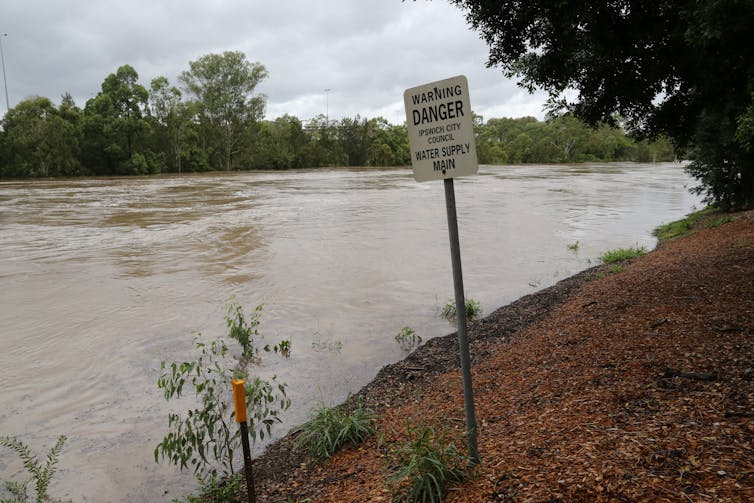Some of us don’t have high-quality drinking water, and it’s putting public health at risk. How do we deliver universal access?

A new Productivity Commission report has urged Australian governments to commit to providing universal access to safe and reliable drinking water, warning that public health depends on it.
The report, National Water Reform 2024, is the result of an inquiry requested by the federal government. It found Australian governments must reform many of the ways water is managed to ensure the current and future wellbeing of our communities, environment and economy.
Australia has an existing strategy for national water reform, known as the National Water Initiative (NWI). It was agreed with the states and territories in 2004.
The Productivity Commission found the initiative has served Australia well throughout the past 20 years, but the challenges of water management are growing. Demand for water is increasing and changing. Climate change is making rainfall less reliable as a water source.
An updated National Water Initiative will help governments navigate these challenges.
The report urges a greater focus on water service provision that is “effective, equitable and efficient”. That requires good management. The report highlights the concept of a basic level of service, requiring all governments to commit to providing universal access to a safe and reliable supply of drinking water.
Why doesn’t everyone have a safe water supply?
Most Australians already enjoy very safe and reliable drinking water services. However, some communities don’t. Many small and remote communities, many of which have high Indigenous populations, have poor drinking water quality.
A December 2023 review looked at water quality trends in remote Australian communities. It highlighted contaminants in the water as a concern.
Very high levels of contaminants in source water are leading to levels that exceed thresholds set by the Australian Drinking Water Guidelines. Excessive hardness, turbidity, fluoride, iron and manganese levels are found in communities with limited treatment facilities.
Other communities have poorly maintained bores or groundwater. These are often vulnerable to runoff pollution from livestock. This exposes communities to risks of infection by bacteria and other pathogens, causing gastrointestinal diseases.
Inadequate water quality and quantity are harming the health of remote communities, particularly among Indigenous populations. Poor-tasting or visually unappealing drinking water may cause them to drink sugary beverages instead.
Some remote communities rely on bore water that isn’t good to drink.
ChameleonsEye/Shutterstock
Water safety is still an issue for bigger communities
In contrast, water quality in Australia’s larger towns and cities is generally very high. But excellent levels of safety are not universal.
The safety of a water supply is not defined only by historical water quality. Safety also encompasses the likelihood and consequences of future incidents.
Some scenarios may be viewed as “an accident waiting to happen”. Even where water quality has historically been excellent, accidents do happen. The consequences can be significant if adequate measures are not in place to manage them. Important preventive measures include strict management of drinking water catchments, application of multiple independent water treatment processes, comprehensive monitoring of these processes, and effective incident response procedures.
In major cities of highly developed countries, water quality incidents tend to occur when something goes seriously wrong. There have been significant waterborne disease outbreaks in:
What are the lessons for Australia?
Often, these incidents involve an element of human error. The risks are greater when skills and training have been neglected. Earlier this year, the Water Services Association of Australia highlighted inadequacies in skills and training for water supply operators.
Many of Australia’s drinking water supplies are also vulnerable to extreme weather conditions. Heatwaves, droughts, bushfires, cyclones and floods can all threaten drinking water supplies.
Climate change is projected to increase the frequency and severity of many types of extreme weather events. This means the risk of water quality incidents in our towns and cities is set to grow.

Floods and other extreme weather events can threaten the safety of water supplies for even large towns and cities.
David Kapernick/AAP
How do we pay for a safe supply?
Another important aspect of providing universal access is affordability. If improved services mean customers can no longer afford to pay their water bills, they will not be any better off.
This need for affordability is often what really limits our ability to improve water quality and safety. A technical solution to practically any water quality problem is available, but someone has to pay for it. The question of how we pay for water quality improvements needs to be considered further.
Our capital cities generally apply the concept of “postage stamp pricing”. All customers pay the same rates for their drinking water, even though some customers cost much more to service than others. But this cross-subsidisation between customers is limited in states where local councils, rather than larger state-wide entities, supply water for regional towns and remote communities.

Supplying high-quality drinking water across the country is an expensive and challenging undertaking.
Ken Griffiths/Shutterstock
All stages of the supply chain matter
The reforms needed to ensure universal access to safe and reliable drinking water also include institutional improvements. The Productivity Commission found there’s a need to ensure the separation of policy setting, service delivery and regulation, each with clearly defined roles.
Water service providers should have incentives to be efficient and innovative, and to deliver services in cost-effective ways that are in their customers’ interests.
For long-term success, Australian governments must establish and maintain processes that ensure water infrastructure developments and refurbishments are ecologically sustainable, economically viable and culturally responsive. If these wider impacts are overlooked, improvements in drinking water quality and safety will be short-lived and come at a high price.







